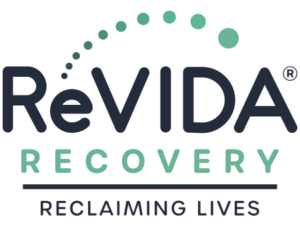
Fentanyl is a man-made opioid that is 80-100 times stronger than morphine. It was originally developed for medical use, but has become a go-to for individuals looking to get high due to its low-cost and ubiquitous availability on the street.
Because it’s such a powerful opioid, fentanyl is also misused in many illegal ways. Fentanyl is added to other drugs to increase their strength or be disguised as a highly potent drug. Many people believe that they are buying another drug, such as heroin or cocaine, and actually don’t realize that they are purchasing fentanyl. Because they don’t realize they are consuming fentanyl, individuals often use more than they should, resulting in the high rate of overdoses we see today. Illegally made fentanyl is primarily manufactured in Mexico, then moved across the border and sold in the US.
One of the most concerning things about fentanyl is that it’s often ingested without the person consuming it having any idea they’re taking fentanyl. Because fentanyl is so often mixed with other drugs, and since it’s stronger than most opioids, this can create a recipe for disaster.
Tennesseans and Virginians must be able to identify this drug and its effects. Quite literally, it may save a life.
Table of Contents
Fentanyl Is Taking a Heavy Toll
Fentanyl continues to negatively affect the lives of many Americans, and that includes the lives of many residents in the great states of Tennessee and Virginia.
In the Volunteer State, deaths involving synthetic opioids other than methadone (mainly fentanyl and fentanyl analogs) increased from 590 in 2017 to 827 in 2018, according to the National Institutes of Health. In the Old Dominion of Virginia, deaths involving synthetic opioids other than methadone (mainly fentanyl and fentanyl analogs) remained high at 852 in 2018.
In general, Tennessee and Virginia continue to be among the hardest-hit states amid the ongoing opioid epidemic. The NIH report also showed heroin-involved deaths were trending up with 369 deaths in 2018. In Virginia, there were 532 heroin-involved deaths in 2018.
According to the 2019 National Survey on Drug Use and Health and the National Survey of Substance Abuse Treatment Services, among people 12 or older in Tennessee, the yearly average percentage of opioid use disorder in the past year did not significantly change between 2015 to 2017 and 2017 to 2019.
During 2017 to 2019, the yearly average prevalence of past-year opioid use disorder in Tennessee was 0.9% (or 50,000), which is similar to both the regional average (0.8%) and the national average (0.7%).
Keep Your Eyes Open and Ears Close to the Ground to Identify Fentanyl
Fentanyl can be difficult to spot since it’s often mixed in with other drugs. The easiest way to prevent accidentally ingesting fentanyl is to avoid illegal drugs and non-prescribed medications.
Most commonly, fentanyl is found in either a powder, pill, or liquid form.
As a powder, it’s typically identified as a brown or white substance. In a powdered form, it’s easy to mix with drugs like cocaine or heroin. As a pill, it can come in various colors, but many photos released by the Drug Enforcement Administration (DEA) show either a blue or white pill. It will also depend on if it’s mixed with other drugs, such as oxycodone (OxyContin), Xanax, or Adderall. In its clear, liquid form, fentanyl can be found in eye drops, nasal sprays, and even dropped onto other substances.
Additionally, knowing the street names for fentanyl can be helpful in identifying it. It may be referred to as:
- Apace
- China Girl
- China Town
- China White
- Dance Fever
- Goodfellas
- Great Bear
- He-Man
- Poison
- Tango and Cash
According to the Centers for Disease Control and Prevention, “It is nearly impossible to tell if drugs have been laced with fentanyl unless you test your drugs with fentanyl test strips. Test strips are inexpensive and typically give results within five minutes, which can be the difference between life or death. Even if the test is negative, take caution as test strips might not detect more potent fentanyl-like drugs, like carfentanil.”
Identifying Fentanyl’s Effects on the Body
Fentanyl overdose is a medical emergency. If you believe someone has overdosed on fentanyl, call 911 immediately.
It cannot be stressed enough: Consuming any illegal substance increases your risk of ingesting fentanyl. Do not take any substances that have not been approved or prescribed by a medical professional to avoid any potential run-ins with fentanyl.
If you think you may have taken fentanyl, there are a few side effects of fentanyl use to keep an eye out for. According to the DEA, “Fentanyl, similar to other commonly used opioid analgesics (e.g., morphine), produces effects such as:
- Euphoria [great happiness]
- Pain relief
- Relaxation
- Sedation
- Confusion
- Drowsiness
- Dizziness
- Nausea
- Vomiting
- Urinary retention
- Pupillary constriction [black centers of the eyes look smaller]”
It’s also easy to overdose on fentanyl. This is a big reason why it continues to wreak havoc across the country and here in Tennessee and Virginia. A fentanyl overdose may be identified by:
- Coma
- Cold, clammy skin
- Change in pupil size
- Blue tint of the skin
- Breathing problems
- Slowed heartbeat
- Unconsciousness
Ultimately, if you’ve overdosed or find yourself craving the effects of fentanyl, you may have developed an addiction.
Identifying Fentanyl Addiction/Opioid Use Disorder
Since fentanyl is a synthetic opioid, it has addiction signs that are similar to those of other opioids. With that said, let’s take a look at what opioid use disorder is.
According to Johns Hopkins Medicine, “Opioid use disorder is a medical condition defined by not being able to abstain from using opioids, and behaviors centered around opioid use that interfere with daily life. Being physically dependent on an opioid can occur when someone has an opioid use disorder, and is characterized by withdrawal symptoms such as cravings and sweating. However, people can misuse opioids and not have physical dependence. When a person has physical dependence, it can be particularly hard to stop taking opioids, and that dependence can interfere with daily routines, including personal relationships or finances.”
Overall, opioid use disorder can be spotted by:
- Changes in sleep habits
- Lack of hygiene (personal cleanliness)
- Sleepiness
- Weight loss
- Unable to control opioid use
- Unable to quit using opioids despite wanting to
- Flu-like symptoms
- Financial problems
- Strong cravings for opioids
- Isolation from people you were once close to
- Problems at school or work
If you’re having any of these issues, you may be living with opioid use disorder. Thankfully, help is out there, and recovery is possible.
Recovery Is Possible
“The most beautiful people we have known are those who have known defeat, known suffering, known struggle, known loss, and have found their way out of the depths. These persons have an appreciation, a sensitivity, and an understanding of life that fills them with compassion, gentleness, and a deep loving concern. Beautiful people do not just happen.”
— Elisabeth Kübler-Ross
Even if you feel like you’re at sea alone, just treading water, there is a lifeline off in the distance waiting to pull you back to shore. No one should have to overcome opioid use disorder alone. The good news is that you don’t have to.
If you’ve tried to get sober before and failed, that is no reason to give up. Your next attempt could be the one that results in you living a full life in recovery. You deserve a life of good health and happiness. The first step on your journey will be the hardest. In the end, it’s worth it.
Call ReVIDA Recovery® Today
ReVIDA Recovery® offers fentanyl overdose treatment, medication-assisted treatment (MAT), and counseling to aid in overcoming opioid use disorder. Our professional team is here to assist you with our knowledge, experience, and most importantly our passion for helping people achieve recovery.
If you or your loved one is living with opioid use disorder, don’t delay getting the treatment that you or they need. Please call ReVIDA Recovery® today at (423) 631-0432.
FAQs:
Is there a way to tell if a pill has fentanyl in it?
According to the CDC, “It is nearly impossible to tell if drugs have been laced with fentanyl unless you test your drugs with fentanyl test strips. Test strips are inexpensive and typically give results within 5 minutes, which can be the difference between life or death. Even if the test is negative, take caution as test strips might not detect more potent fentanyl-like drugs, like carfentanil.”
The best way to avoid accidentally ingesting fentanyl is to stay away from illegal drugs or drugs that have not been approved by a medical professional.
Is fentanyl a hazardous material?
According to one study, “Given the potency and potential lethality of fentanyl and carfentanil, any contact with these substances must be treated as a hazardous material (HAZMAT) situation and should be assessed only by individuals who have been trained to handle hazardous materials.”
What is opioid use disorder?
Opioid use disorder is defined by the inability to control or regulate opioid use. The behavior becomes compulsive and begins to take precedence over other activities in the individual’s life.









